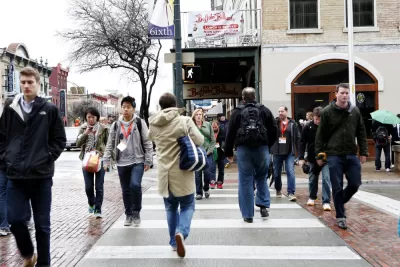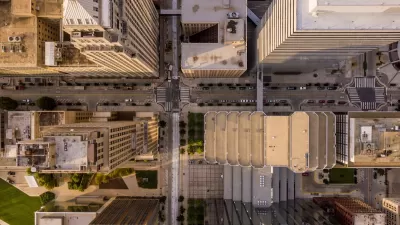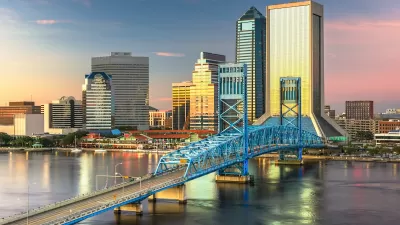From NIMBYism to entrenched traffic engineering culture, a variety of complex obstacles have prevented Vision Zero advocates from achieving the movement’s goals in the U.S.

David Zipper delves into the complex reasons why the Vision Zero movement has made little progress in the United States, where pedestrian deaths are rising in recent years despite less vehicle miles driven during the pandemic.
Even though dozens of U.S. cities launched Vision Zero programs and pledged to prioritize pedestrian safety, many streets have grown more, not less, deadly. “In New York City, traffic deaths in 2021 were the highest since committing to Vision Zero seven years earlier. Portland, Oregon, saw more traffic deaths last year than it had since 1990, and Austin set a new all-time record (both became Vision Zero adherents in 2015). Deaths are surging in Philadelphia and Washington, D.C., as well. In fact, it’s hard to find any Vision Zero cities where traffic deaths have declined.”
Zipper mentions one notable outlier, Hoboken, New Jersey, which eliminated traffic deaths for three consecutive years. “But signing on to Vision Zero proved to be far less difficult than adjusting policy and infrastructure to reflect the approach.”
According to Seleta Reynolds, the director of the Los Angeles Department of Transportation, “A moment comes when a person shows up to do the actual [infrastructure] project, and it’s down the street from your house. Whether it’s a bike lane or a bus lane, the calculus suddenly changes, and it feels like a fundamental assault on your way of life.”
Zipper also points to opposition from political leaders (the top) and engineering and planning culture (the middle). “To make progress even harder, local Vision Zero efforts must also overcome a bevy of state and federal rules that tie their hands.”
“Today, a traffic death toll that’s rising faster per mile than any time since Calvin Coolidge was in the White House seems to justify a new wave of popular outrage, along with urgent calls for change. Buttigieg has repeatedly referred to a ‘national crisis’ of fatalities,” Zipper points out. “But how many Americans are prepared to fight to ensure that Vision Zero promises translate into action?”
FULL STORY: Why ‘Vision Zero’ Hit a Wall

Maui's Vacation Rental Debate Turns Ugly
Verbal attacks, misinformation campaigns and fistfights plague a high-stakes debate to convert thousands of vacation rentals into long-term housing.

Planetizen Federal Action Tracker
A weekly monitor of how Trump’s orders and actions are impacting planners and planning in America.

In Urban Planning, AI Prompting Could be the New Design Thinking
Creativity has long been key to great urban design. What if we see AI as our new creative partner?

How Trump's HUD Budget Proposal Would Harm Homelessness Response
Experts say the change to the HUD budget would make it more difficult to identify people who are homeless and connect them with services, and to prevent homelessness.

The Vast Potential of the Right-of-Way
One writer argues that the space between two building faces is the most important element of the built environment.

Florida Seniors Face Rising Homelessness Risk
High housing costs are pushing more seniors, many of them on a fixed income, into homelessness.
Urban Design for Planners 1: Software Tools
This six-course series explores essential urban design concepts using open source software and equips planners with the tools they need to participate fully in the urban design process.
Planning for Universal Design
Learn the tools for implementing Universal Design in planning regulations.
Gallatin County Department of Planning & Community Development
Heyer Gruel & Associates PA
JM Goldson LLC
Mpact (founded as Rail~Volution)
City of Camden Redevelopment Agency
City of Astoria
Jefferson Parish Government
Camden Redevelopment Agency
City of Claremont





























